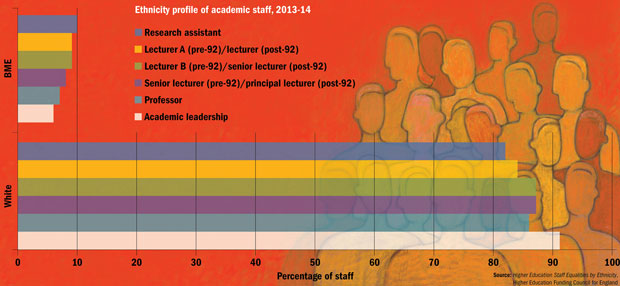Despite the fact that 10 per cent of research assistants are from BME backgrounds, only 6 per cent of those in academic leadership positions are from such groups.
The data, published last month by the Higher Education Funding Council for England, show that the proportion of BME academics drops by one percentage point for each step of the career ladder. By contrast, for the most part, the proportion of white academics steadily increases by more than one percentage point with each career step.
In the 2013‑14 academic year, 8 to 9 per cent of lecturers and senior lecturers and 7 per cent of professors were black or minority ethnic, according to the data. This compares with 84 to 87 per cent of lecturers and senior lecturers and 86 per cent of professors who were white.
POSTSCRIPT:
Article originally published as: In the minority: academics from BME backgrounds squeezed out at the top (25 June 2015)
Register to continue
Why register?
- Registration is free and only takes a moment
- Once registered, you can read 3 articles a month
- Sign up for our newsletter
Subscribe
Or subscribe for unlimited access to:
- Unlimited access to news, views, insights & reviews
- Digital editions
- Digital access to THE’s university and college rankings analysis
Already registered or a current subscriber?

